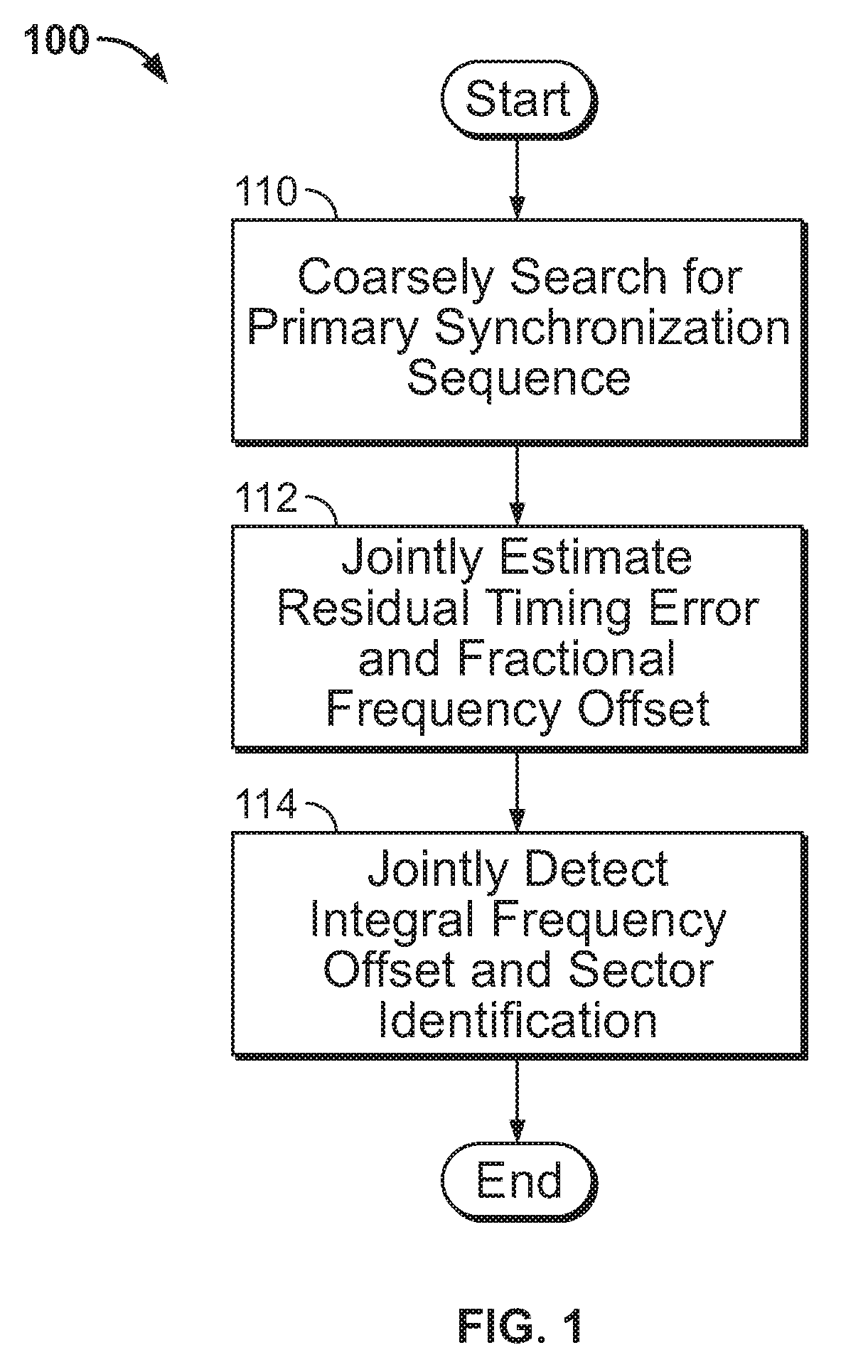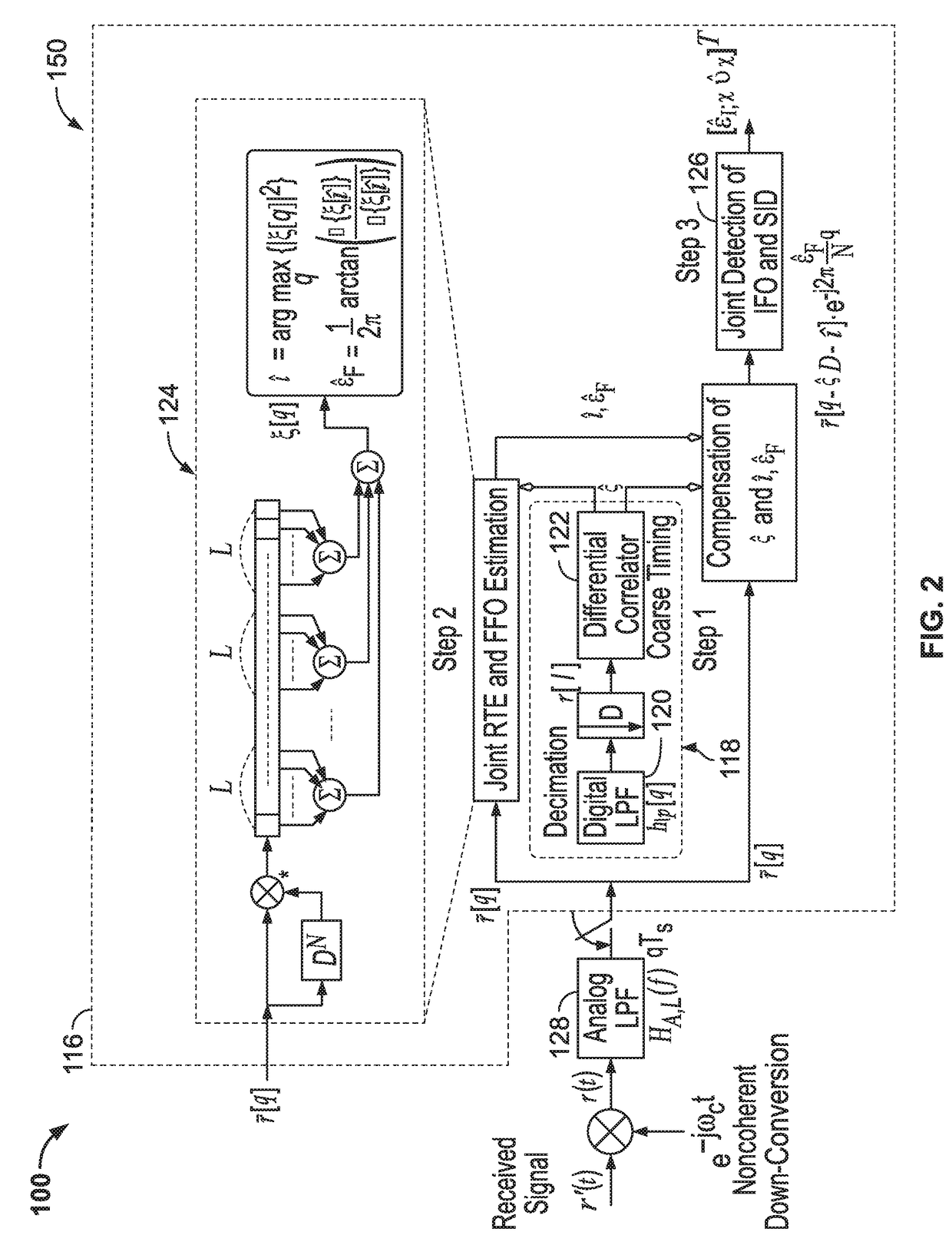System and Method for Performing Initial Synchronization During Wireless Sector Searches
a wireless sector and initial synchronization technology, applied in the field of wireless communication systems, can solve the problems of not taking into account multi-sector reception in current methods, many current methods do not consider multi-path reception, and diversity is usually not exploited, and achieve the effect of signal-to-noise ratio
- Summary
- Abstract
- Description
- Claims
- Application Information
AI Technical Summary
Benefits of technology
Problems solved by technology
Method used
Image
Examples
Embodiment Construction
[0022]The present disclosure relates to a system and method for performing initial synchronization during wireless sector searches, including a first subsystem for coarse timing alignment including a decimator to reduce computational complexity and a long-lag differential correlator, a second subsystem for jointly estimating RTE and FFO utilizing a short-lag differential correlator, and a third subsystem for jointly detecting IFO and SID utilizing segmental FD MFs. Unlike the methods described above, the system and method of the present disclosure takes intercell interference, ICI, and multipath fading into consideration with assistance from inherent diversity. A mobile station implementing the system and method of the present disclosure exhibits enhanced coverage, lower outage probability, rapid initial synchronization, and rapid handover. These benefits are particularly evident at corners, or on edges, between cells, e.g., areas of strong intercell interference and low SNRs.
[0023]...
PUM
 Login to View More
Login to View More Abstract
Description
Claims
Application Information
 Login to View More
Login to View More - R&D
- Intellectual Property
- Life Sciences
- Materials
- Tech Scout
- Unparalleled Data Quality
- Higher Quality Content
- 60% Fewer Hallucinations
Browse by: Latest US Patents, China's latest patents, Technical Efficacy Thesaurus, Application Domain, Technology Topic, Popular Technical Reports.
© 2025 PatSnap. All rights reserved.Legal|Privacy policy|Modern Slavery Act Transparency Statement|Sitemap|About US| Contact US: help@patsnap.com



